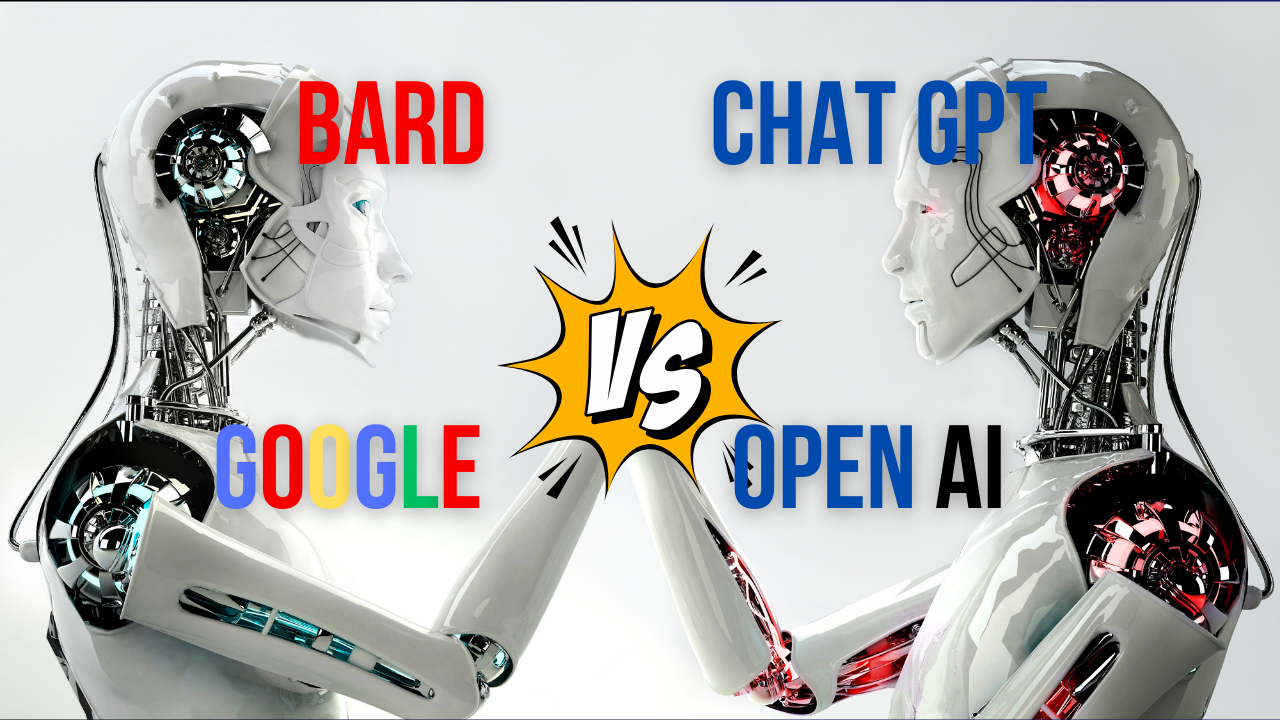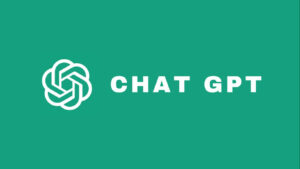Have you ever wondered what machines are capable of in the world of artificial intelligence? OpenAI’s ChatGPT and Google’s BARD AI are two prominent contenders in this space, showcasing the remarkable potential of AI. These language models (LLMs) have the ability to generate responses based on user prompts, making them useful tools for tasks like code and idea generation, as well as content creation. While these AI tools can provide valuable assistance to developers and technical writers, they should not be solely relied upon. It’s important to understand how to ask the AI the right questions and utilize it as an enhancer to your own skills and expertise. Despite their productivity-enhancing capabilities, human intelligence and authenticity remain vital factors in producing quality outcomes.
Capabilities of OpenAI’s ChatGPT
Code Generation
OpenAI’s ChatGPT is a powerful tool for code generation. With its advanced language models, it can generate code snippets based on user prompts. This capability can be immensely useful for developers who need assistance in writing code quickly and efficiently. Whether you are a beginner looking for code examples or an experienced developer seeking to automate repetitive tasks, ChatGPT can provide valuable code generation capabilities.
Idea Generation
In addition to code generation, ChatGPT can also be used to generate ideas. By providing a prompt related to a specific topic or problem, ChatGPT can generate creative and innovative suggestions and solutions. This can be particularly helpful for technical writers or individuals who are looking for inspiration and new ideas to explore. With ChatGPT’s ability to understand context and generate coherent responses, it can assist users in brainstorming and ideation processes.
Content Creation
ChatGPT’s language generation capabilities make it a valuable tool for content creation. Whether you need to write an article, create marketing copy, or draft documentation, ChatGPT can provide assistance. By providing prompts and specifying the required style or tone, you can rely on ChatGPT to generate content that is coherent, well-written, and aligned with your requirements. Technical writers can leverage this tool to streamline their content creation process and improve their overall productivity.
Capabilities of Google’s BARD AI
Built on Google’s LaMDA
Google’s BARD AI, a significant player in the AI/LLM space, is built on Google’s cutting-edge language model called LaMDA (Language Model for Dialogue Applications). LaMDA has been specifically designed to facilitate natural and flowing conversations, enabling BARD AI to generate responses that are more refined and context-aware. By training BARD AI on vast amounts of conversational data, Google aims to create a tool that can carry out engaging and meaningful discussions with users.
Focused on Fine-tuned Responses
While ChatGPT is designed to generate comprehensive and diverse responses, BARD AI focuses on providing fine-tuned responses. This means that BARD AI’s responses are crafted to be specific and accurate, catering to the user’s needs more precisely. By narrowing its focus, BARD AI aims to deliver high-quality and reliable answers in a more targeted manner. This capability makes BARD AI well-suited for scenarios that require precise information and a deep understanding of the context.
Usefulness for Developers and Technical Writers
Assisting with Code Generation
Both ChatGPT and BARD AI can be incredibly useful for developers when it comes to code generation. These tools can assist developers in writing code snippets, providing helpful suggestions, and automating certain coding tasks. By leveraging the power of AI, developers can accelerate their coding process, reduce errors, and enhance their overall productivity. These AI tools can be particularly beneficial for developers who are looking to learn new programming techniques or refine their existing codebase.
Aiding in Idea Generation
For technical writers and content creators, the ability to generate ideas is crucial. Both ChatGPT and BARD AI can serve as valuable resources in idea generation by offering fresh perspectives and unique insights. These AI tools can assist writers in overcoming writer’s block, providing them with alternative angles and creative suggestions. By using AI to generate ideas, technical writers can expand their creativity and develop engaging content that resonates with their audience.
Supporting Content Creation
Content creation is a key aspect of both technical writing and general writing. ChatGPT and BARD AI can be leveraged by writers to streamline their content creation process, saving time and effort. These AI tools can generate drafts, outlines, or even complete sections of a piece of content based on user prompts. By utilizing AI for content creation, writers can focus on refining and enhancing the generated content, ensuring accuracy and coherence. This collaboration between human writers and AI can help produce content that is well-researched, well-structured, and tailored to the target audience.
Importance of Not Solely Relying on AI
Understanding How to Ask the AI the Right Questions
While AI tools like ChatGPT and BARD AI are powerful and capable, it’s important to understand how to ask the AI the right questions. AI models are trained on vast amounts of data, and their responses are influenced by the prompts they receive. To maximize the usefulness of these tools, it’s crucial to provide clear and specific instructions and prompts. By carefully crafting your queries, you can elicit more accurate and relevant responses from the AI. This understanding of how to interact with AI effectively is essential to ensuring the desired outcomes.
Using AI as an Enhancer to Skills and Expertise
AI tools should be seen as enhancers rather than replacements for human skills and expertise. While they can significantly improve productivity and provide valuable assistance, AI models still have limitations. Developers and technical writers should leverage AI as a tool to augment their own capabilities, rather than relying solely on AI-generated outputs. Combining human intelligence, critical thinking, and domain expertise with AI-generated suggestions or code snippets can lead to more robust and high-quality outcomes.
Enhancing Productivity and Saving Time
Increasing Efficiency in Code Generation
For developers, time is of the essence. ChatGPT and BARD AI can significantly increase efficiency in code generation, saving valuable time. These tools can quickly generate code snippets, provide solutions to common coding problems, and offer alternative implementations. By utilizing AI for code generation, developers can focus on the core functionality of their projects, rather than spending excessive time on routine or repetitive coding tasks. This increased efficiency can lead to faster development cycles and more rapid prototyping.
Faster Idea Generation
When it comes to idea generation, AI tools like ChatGPT and BARD AI can expedite the process. Instead of struggling to come up with new ideas or solutions, users can provide a prompt to the AI models and receive instant suggestions. This can be particularly helpful for technical writers who need to meet tight deadlines or developers who are looking for creative solutions to complex problems. By leveraging AI for idea generation, individuals can explore a wider range of possibilities in a shorter amount of time, ultimately improving productivity.
Streamlined Content Creation
Content creation is often a time-consuming task that requires significant effort and attention to detail. ChatGPT and BARD AI can streamline the content creation process by generating drafts or providing suggestions for various sections of a piece of content. Technical writers can save time by using AI-generated content as a starting point and then refining it to match their specific requirements and writing style. This collaboration between human writers and AI can reduce the overall time spent on content creation, allowing writers to focus on higher-level tasks such as editing and ensuring accuracy.
Maintaining Human Intelligence and Authenticity
Recognizing the Value of Human Expertise
While AI tools can generate impressive outputs, they lack the depth of human expertise and experience. It is essential to recognize the value of human intelligence and the ability to apply contextual understanding, critical thinking, and intuition to various tasks. Developers and technical writers should rely on their own experience and knowledge to validate and refine the outputs generated by AI tools. By combining AI-generated suggestions with human expertise, the final outcomes can be more robust and tailored to meet specific requirements.
Preserving Authenticity in Content
Authenticity plays a crucial role in content creation. While AI tools like ChatGPT and BARD AI can provide helpful suggestions and generate content, it’s important to ensure that the final output retains the authenticity and voice of the human writer. AI-generated content should be seen as a starting point or a source of inspiration, rather than a replacement for original thinking and creativity. Technical writers should apply their own unique perspectives and insights to the AI-generated content, tailoring it to fit the intended audience and maintaining an authentic voice.
Potential Limitations and Risks
Risk of Inaccurate Code Generation
The risk of inaccurate code generation is a potential limitation of AI tools like ChatGPT and BARD AI. While these tools can generate code snippets, there is a possibility of errors or inefficient implementations. It’s important for developers to carefully review and validate the code generated by AI models to ensure its correctness and adherence to best practices. Relying solely on AI-generated code without human oversight can lead to bugs, security vulnerabilities, and suboptimal performance.
Generating Unreliable Ideas
AI-generated ideas may not always be reliable or feasible. While ChatGPT and BARD AI can offer creative suggestions, it’s crucial to assess the validity and practicality of these ideas. Technical writers and developers should evaluate the AI-generated ideas against their own expertise and knowledge to determine their viability. Blindly relying on AI-generated ideas without critical analysis can result in impractical solutions or misleading information.
Loss of Originality in Content
When using AI tools for content creation, there is a risk of losing originality and uniqueness in the final output. While ChatGPT and BARD AI can generate well-structured and coherent content, it may lack the creativity and personal touch that human writers bring. Writers should be cautious not to rely too heavily on AI-generated content, ensuring that their own insights and perspectives are integrated into the final piece. This balance between AI-generated content and human creativity is essential to preserve originality and avoid generic or formulaic outputs.
Ethical Considerations
Avoiding Bias in AI-generated Outputs
Biases can inadvertently be present in AI models due to the training data used. It’s essential for developers and technical writers to be aware of potential biases that may manifest in AI-generated outputs. Care should be taken to ensure that AI-driven content or code does not propagate discriminatory or misleading information. Developers should regularly monitor and evaluate the performance of AI models, actively working to mitigate biases and promote fairness and inclusivity.
Ensuring Responsible Use of AI Tools
Responsible use of AI tools is paramount. Developers and technical writers should adhere to ethical guidelines and best practices when utilizing AI models like ChatGPT and BARD AI. This includes respecting privacy, ensuring data security, and obtaining necessary consent when using AI-driven technologies. Transparent communication about the involvement of AI tools and clear segregation of AI-generated content from human-authored content are critical in maintaining ethical standards and building trust with users.
Balancing Automation and Human Involvement
Finding the Optimal Balance
Balancing automation and human involvement is key to harnessing the full potential of AI tools. While AI models can greatly enhance productivity and save time, it’s important to determine the optimal level of human intervention. Developers and technical writers should evaluate the outputs generated by AI tools and provide necessary feedback and corrections. Regularly reviewing and refining the AI-generated outputs ensures the integration of human intelligence and expertise, contributing to the overall quality of the final deliverables.
Leveraging AI as a Tool
AI tools like ChatGPT and BARD AI should be seen as tools to augment human capabilities, rather than replacements for human involvement. Developers and technical writers should leverage the strengths of AI, such as rapid generation of ideas or code snippets, while actively contributing their own insights, critical thinking, and expertise. By combining the power of AI with human intelligence, the outcomes can be more sophisticated, contextually accurate, and aligned with the specific requirements of the task at hand.
Conclusion
Harnessing the power of AI, including tools like OpenAI’s ChatGPT and Google’s BARD AI, can significantly enhance productivity and assist developers and technical writers in various aspects of their work. These AI models offer capabilities in code generation, idea generation, and content creation, streamlining workflows and saving valuable time. However, it is essential to not solely rely on AI and to understand how to effectively interact with AI tools to maximize their utility. Developers and technical writers should use AI as an enhancer to their own skills and expertise, validating and refining the outputs generated by AI models. Balancing automation and human involvement, while maintaining authenticity and preserving originality, is crucial to achieving the optimal outcomes. By leveraging the power of AI and maximizing the potential of human intelligence, developers and technical writers can unlock new possibilities, improve productivity, and deliver high-quality results.



